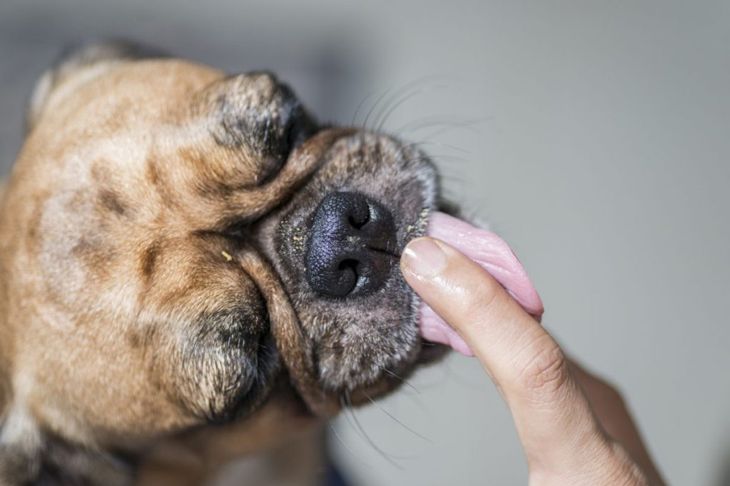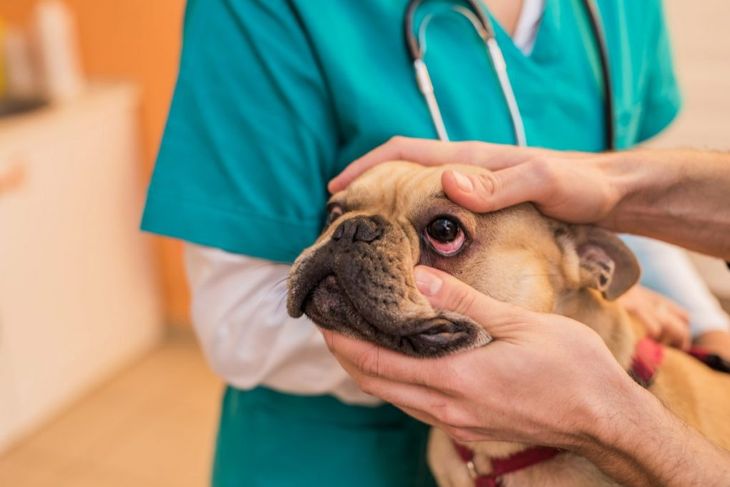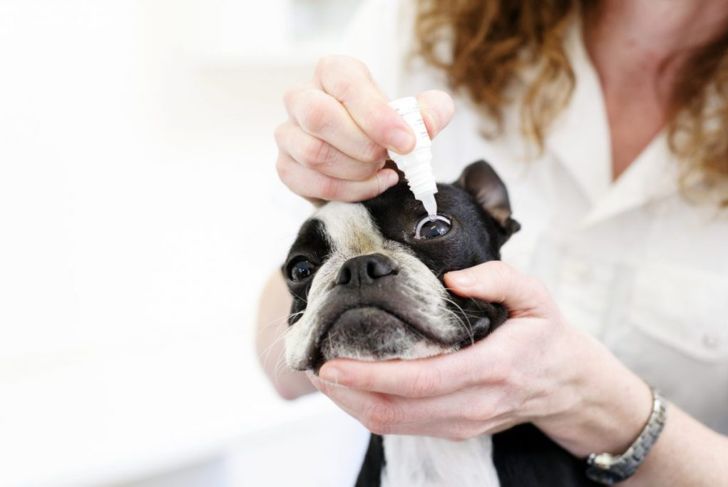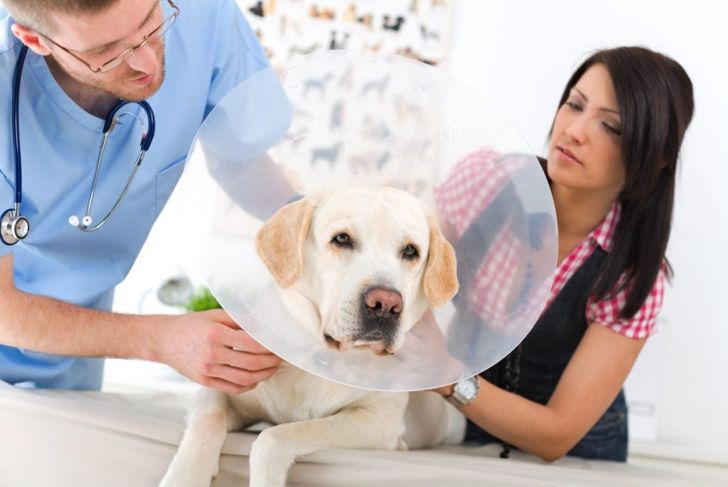Most people recognize pink eye, or conjunctivitis, very quickly. A person’s eyes become inflamed with a red or pink tinge. Can dogs get pink eye too? Yes, they can. Conjunctivitis produces symptoms in dogs that are very similar to those exhibited by humans with pink eye. Conjunctivitis occurs when the conjunctiva, the pink tissue inside the eyelid, becomes inflamed. Dogs can develop two types of conjunctivitis. Infectious conjunctivitis comes from an infectious pathogen, while non-infectious conjunctivitis refers to inflammation caused by anything other than an infection.
Symptoms of Conjunctivitis in Dogs
Inflammation with pink or red coloration normally affects both eyes, although it can occur in just one eye. Conjunctivitis causes clear, watery discharge or thick yellow, green, or white discharge. A dog may have difficulty opening its eyes if discharge causes eyelids to stick together. Other symptoms of conjunctivitis in dogs include squinting, frequent blinking, swollen eyelids, and rubbing or pawing at the eyes. Nasal discharge, coughing, or sneezing can occur with conjunctivitis as well.
Causes of Infectious Conjunctivitis in Dogs
Conjunctivitis can be an isolated disease of the eyes or secondary to an underlying condition. Bacterial and viral infections are the most common causes of infectious conjunctivitis. Less common infections come from fungus or parasites in the conjunctiva or eyelids. A dog with infectious conjunctivitis should be separated from other animals until the infection is gone. Owners need to clean food and water bowls and wash bedding thoroughly to prevent repeated infections.
Causes of Non-Infectious Conjunctivitis in Dogs
Non-infectious conjunctivitis may come from structural defects such as entropion. Entropion is a deformity that causes the edges of the eyelids to roll inward. The deformity allows hair on the eyelids to scrape or scratch the eyes. Pink eye may indicate inflammation of the tear sac or tumors in the eye, eyelid, or eyelashes. Other causes of non-infectious conjunctivitis include eye injury, foreign objects in the eye, and environmental irritants. Dust, debris, pollen, and other plant matter can cause allergic conjunctivitis.
Prevention
Owners can take precautions to minimize the risk of conjunctivitis in their dogs. Up-to-date vaccines prevent conjunctivitis secondary to distemper and some other viruses. Supervise dogs during playtime and interactions with other animals to prevent eye injuries and trauma. Stop dogs from engaging in potentially harmful behaviors such as sniffing around thorn bushes or chasing cats. Secure dogs in a crate or car seat while traveling. Never allow dogs to stick their heads out of car windows.
Complications of Conjunctivitis
Sometimes dogs with conjunctivitis recover without medical intervention, but owners must be cautious. Infectious conjunctivitis that lasts more than 2-3 days probably will not resolve on its own. The risk of permanent vision loss and eye damage increases in proportion to the duration of an untreated infection. Non-infectious conjunctivitis caused by an underlying condition or structural issue can not heal on its own. Owners cannot be sure of the cause without a veterinary examination, so it is best to consult a veterinarian when symptoms appear.
Diagnosis
Veterinarians diagnose conjunctivitis through medical history, observable symptoms, and thorough examination of the eyes, eyelids, and surrounding structures using an ophthalmic lens. Diagnostic tests confirm the diagnosis and help veterinarians determine an effective treatment plan. The Schirmer’s tear test evaluates tear production, and blood tests or urinalysis screen for possible underlying illnesses.
Stain Test and Eye Pressure
Veterinarians look for scratches, ulcers, and abrasions on the cornea with stain tests. Fluorescein dye applied to the eyes has a darker appearance in damaged areas. Dye concentrations also indicate eye pressure to look for conditions like glaucoma or uveitis. Uveitis occurs when blood vessels in dark tissues near the front of the eyes become inflamed and painful. Glaucoma and uveitis in dogs often trigger symptoms of conjunctivitis. The stain test for dogs is similar to the procedure for evaluating eye pressure in humans.
Diagnostic and Treatment Tests
White, green, or yellow purulent discharge usually indicates a bacterial or fungal infection. Cultures of purulent discharge let veterinarians identify infectious organisms to determine an effective treatment. Other diagnostic tests include nasolacrimal duct flushing, biopsy, allergy tests, and cytology, or microscopic examination, of the conjunctiva. Veterinarians may recommend a buster collar or similar device so dogs cannot reach their eyes until conjunctivitis clears up. Dogs scratching and pawing at their eyes may cause more serious injuries.
Symptomatic and Infectious Treatment
Treatment depends on the cause of conjunctivitis. Eye drops containing steroids and other anti-inflammatory medications reduce pain and swelling. Medications to stimulate tear production and lubricant ointment or drops flush foreign bodies out of the eye and alleviate dryness. Conjunctivitis as a result of a systemic viral or bacterial infection resolves after treating the systemic infection.
Surgery or Long-Term Treatment
Surgical procedures remove tumors or correct abnormal eye structures. Surgery may be necessary for severe eye injuries as well. Dogs affected by immune-mediated allergic conjunctivitis may need ongoing anti-histamine eye drops or ointment. Conjunctivitis secondary to glaucoma or other chronic eye condition resolves with treatment of the condition. Many chronic eye conditions require continuous treatment and monitoring.

 Home
Home Health
Health Diet & Nutrition
Diet & Nutrition Living Well
Living Well More
More




















